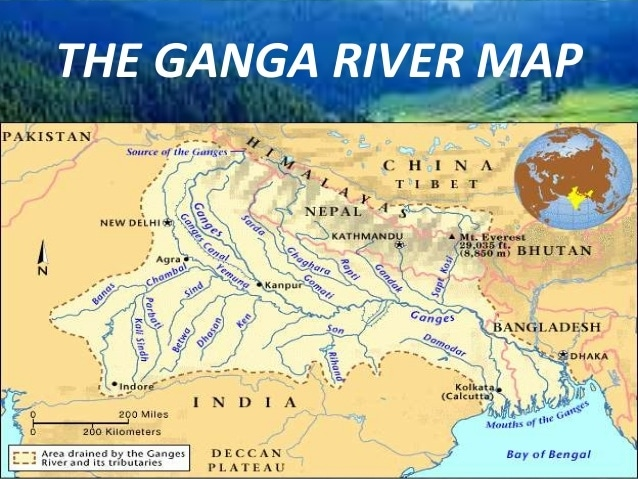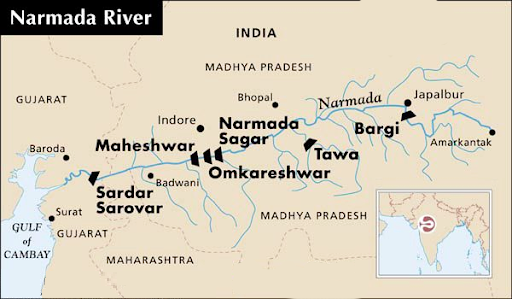Uttar Pradesh Switch to Hindi
Toll-Free Number for Vidya Samiksha Kendras
Why in News?
According to the sources, the Uttar Pradesh government is set to implement a toll-free number system for the Vidya Samiksha Kendras as part of its efforts to improve the quality of education.
Key Points
- This toll-free line will act as a platform for gathering feedback, addressing concerns, and resolving school education inquiries from parents, students, and teachers.
- It will use interactive voice response (IVR) technology to address various educational concerns.
- This initiative is anticipated to increase public involvement and bolster the education system in order to support students at the primary, upper primary, and composite school levels across the state.
- Additionally, all Vidya Samiksha Kendras will be incorporated into this process.
Vidya Samiksha Kendras (VSKs)
- About:
- VSK is aimed at leveraging data and technology to bring a big leap in learning outcomes.
- This will cover data of more than 15 Lakh schools, 96 Lakh teachers and 26 Crore students and analyze them meaningfully using big data analysis, Artificial Intelligence (AI) and machine learning in order to enhance the overall monitoring of the education system and thereby improving learning outcomes.
- Objectives:
- To monitor the real-time status of various projects/ activities under the ambit of Samagra Shiksha.
- To keep track of enrolled students including learning outcomes, Dropouts, support required by teachers and schools, etc.
- To monitor and track field level academic and non-academic activities at state level and also empower administrators and teachers in the field to take data driven decisions.
- To set up a centralized help desk for grievance redressal mechanisms for stakeholders of the School ecosystem.
- To identify and analyse improvement areas for decision making and implementation that needs urgent attention.


Uttarakhand Switch to Hindi
Women Swept Away in Uttarakhand Rivers
Why in News?
Recently, Three women were swept away by strong currents in Ganga and Bhagirathi rivers in Uttarakhand.
Key Points
- A State Disaster Response Force (SDRF) team has launched a search operation in the area.
- Bhagirathi River:
- It is a turbulent Himalayan river of Uttarakhand, and one of the two headstreams of the Ganges.
- The Bhagirathi rises at the foot of Gangotri Glacier, at Gaumukh, at an elevation of 3892 m and fanning out into the 350 km wide Ganga delta, it finally empties into the Bay of Bengal.
- The Bhagirathi and Alaknanda join at Devprayag in Garhwal and are thereafter known as the Ganges.


Bihar Switch to Hindi
Stampede at Temple in Bihar
Why in News?
Recently, several people died after a stampede occurred at Baba Siddhnath Temple in Makhdumpur, located in the Jehanabad district of Bihar.
Key Points
- The incident was reportedly sparked by a dispute amongkanwariyas and flower vendors near the temple entrance.
- Local authorities are investigating the cause, and financial assistance has been announced for the families of the victims.
Stampede
- About:
- A stampede is an impulsive mass movement of a crowd that often results in injuries and deaths.
- It is often triggered by response to a perceived danger, loss of physical space and a collective will to attain something seen as gratifying.
- Types:
- Two main types of stampedes are Unidirectional stampedes occur when a crowd moving in the same direction encounters a sudden change in force, triggered by forces like sudden stops or negative forces like broken barriers.
- Turbulent stampedes happen in situations with uncontrolled crowds, induced panic, or crowds merging from multiple directions.
- Fatalities in Stampedes:
- Stampedes can cause fatalities through:
- Traumatic Asphyxia: It is the most common cause that occurs due to external compression of the thorax or upper abdomen. Can happen even in moderate crowds of 6-7 people pushing in one direction.
- Other causes: Myocardial infarction (heart attack), Direct crushing injuries to internal organs, Head injuries and Neck compression.
- Stampedes can cause fatalities through:


Madhya Pradesh Switch to Hindi
Floating Solar Project in Madhya Pradesh
Why in News?
According to the sources, The largest floating solar project in central and north India, generating 90 MW of energy, has been commissioned at Omkareshwar in Madhya Pradesh.
Key Points
- The project is executed by SJVN Green Energy Limited (SGEL). It is a Mini Ratna Schedule 'A' Central Public Sector Undertaking (CPSU) under the Ministry of Power, Government of India.
- Omkareshwar Floating Solar Project:
- Located in the Omkareshwar Floating Solar Park on Narmada river in Khandwa, Madhya Pradesh.
- The project aims to significantly reduce carbon emissions by 2.3 lakh tons of CO2, supporting India's goal of achieving net-zero emissions by 2070.
- It will also help in water conservation by reducing water evaporation.
Narmada River
- About:
- The Narmada River (also known as Rewa) serves as a traditional boundary between North and South India.
- It is 1,312 km west of its origin from the Amarkantak peak of Maikal mountain. It flows into the Gulf of Khambhat.
- It drains a large area in Madhya Pradesh besides some areas in the states of Maharashtra and Gujarat.
- It is a West flowing river of the peninsular region flowing through a rift valley between the Vindhya Range on the north and the Satpura Range on the south.
- Tributaries:
- The predominant tributaries from the right are – Hiran, Tendori, Barna, Kolar, Man, Uri, Hatni, and Orsang.
- The predominant left tributaries are – Burner, Banjar, Sher, Shakkar, Dudhi, Tawa, Ganjal, Chhota Tawa, Kundi, Goi, and Karjan.
- Dams:
- The Major dams on the river include Omkareshwar and Maheshwar dams.


Rajasthan Switch to Hindi
Rajasthan’s First Aviation Academy
Why in News?
Recently, Rajasthan Chief Minister inaugurated the state’s first flight training academy at Kishangarh airport in Ajmer district.
Key Points
- The new academy would help in the growth of economic activities in Kishangarh, which had emerged as a major business centre because of its marble and granite industry.
- The enhancement in air connectivity in the State will also facilitate tourism.
- The Centre had approved 21 greenfield airports across the country and taken steps to increase the number of air passengers and promote regional connectivity by upgrading under-serviced air routes.
- More than 1.41 crore domestic passengers had benefited from the Centre’s UDAN scheme.
UDAN (Ude Desh ka Aam Nagrik) Scheme
- About:
- The scheme was launched by the Ministry of Civil Aviation for regional airport development and regional connectivity enhancement.
- It is a part of the National Civil Aviation Policy, 2016.
- The scheme is applicable for a period of 10 years.
- Objectives:
- Improve the air connectivity to remote and regional areas of India.
- Development of remote areas and enhancing trade and commerce and tourism expansion.
- Enable common people to access air travel with affordable rates.
- Employment creation in the aviation sector.


Jharkhand Switch to Hindi
Security Camps on Tribal Properties
Why in News?
According to a Citizen’s report, most of the security camps in Chhattisgarh and Jharkhand, post 2019, have been set up on private or community properties of tribals without their consent and in severe violation of existing laws.
Key Points
- The proliferation of paramilitary camps set up without the consent of tribal communities in Chhattisgarh and Jharkhand, which are meant to facilitate mining operations and corporate interests at the cost of Adivasi lives and constitutional rights.
- The peaceful democratic protests against the camps have been ignored or suppressed using brutal methods, such as lathi-charge, burning the sites, and firing on the protestors.
- Most of these camps have been set up in areas that currently fall in the conservation or no-mining zone as per the Management Plan for Sustainable Mining 2018.
- The report calls for the implementation of the Panchayat (Extension to Scheduled Areas) Act, 1996 and the Forest Rights Act, 2006 to respect the law and end human rights violations.
Panchayat (Extension to Scheduled Areas) Act, 1996
- About:
- The PESA Act was enacted in 1996 “to provide for the extension of the provisions of Part IX of the Constitution relating to the Panchayats to the Scheduled Areas”.
- Part IX, comprising Articles 243-243ZT of the Constitution, contains provisions relating to municipalities and cooperative societies.
- The PESA Act was enacted in 1996 “to provide for the extension of the provisions of Part IX of the Constitution relating to the Panchayats to the Scheduled Areas”.
- Provisions:
- Under the Act, Scheduled Areas are those referred to in Article 244(1), which says that the provisions of the Fifth Schedule shall apply to the Scheduled Areas and Scheduled Tribes in states other than Assam, Meghalaya, Tripura, and Mizoram.
- The Fifth Schedule provides for a range of special provisions for these areas.
- Ten states — Andhra Pradesh, Chhattisgarh, Gujarat, Himachal Pradesh, Jharkhand, Madhya Pradesh, Maharashtra, Odisha, Rajasthan, and Telangana have notified Fifth Schedule areas that cover (partially or fully) several districts in each of these states.
Forest Rights Act, 2006
- The Forest Rights Act (FRA), 2006 was introduced to formally recognise and grant forest rights and occupation in forest lands to forest-dwelling Scheduled Tribes and other traditional forest dwellers who have resided in these forests for generations, even though their rights had not been officially documented.
- It aimed to address the historical injustices faced by forest-dwelling communities due to the forest management policies of colonial and post-colonial India, which failed to acknowledge their long-standing symbiotic relationship with the forests.
- Additionally, the Act sought to empower forest dwellers by enabling them to access and utilise forest resources sustainably, promote biodiversity and ecological balance, and protect them from unlawful evictions and displacement.










%20MPPCS%202025%20Desktop%20E.jpg)
%20MPPCS%202025%20Mobile%20E%20(1).jpg)










.png)
.png)











 PCS Parikshan
PCS Parikshan



